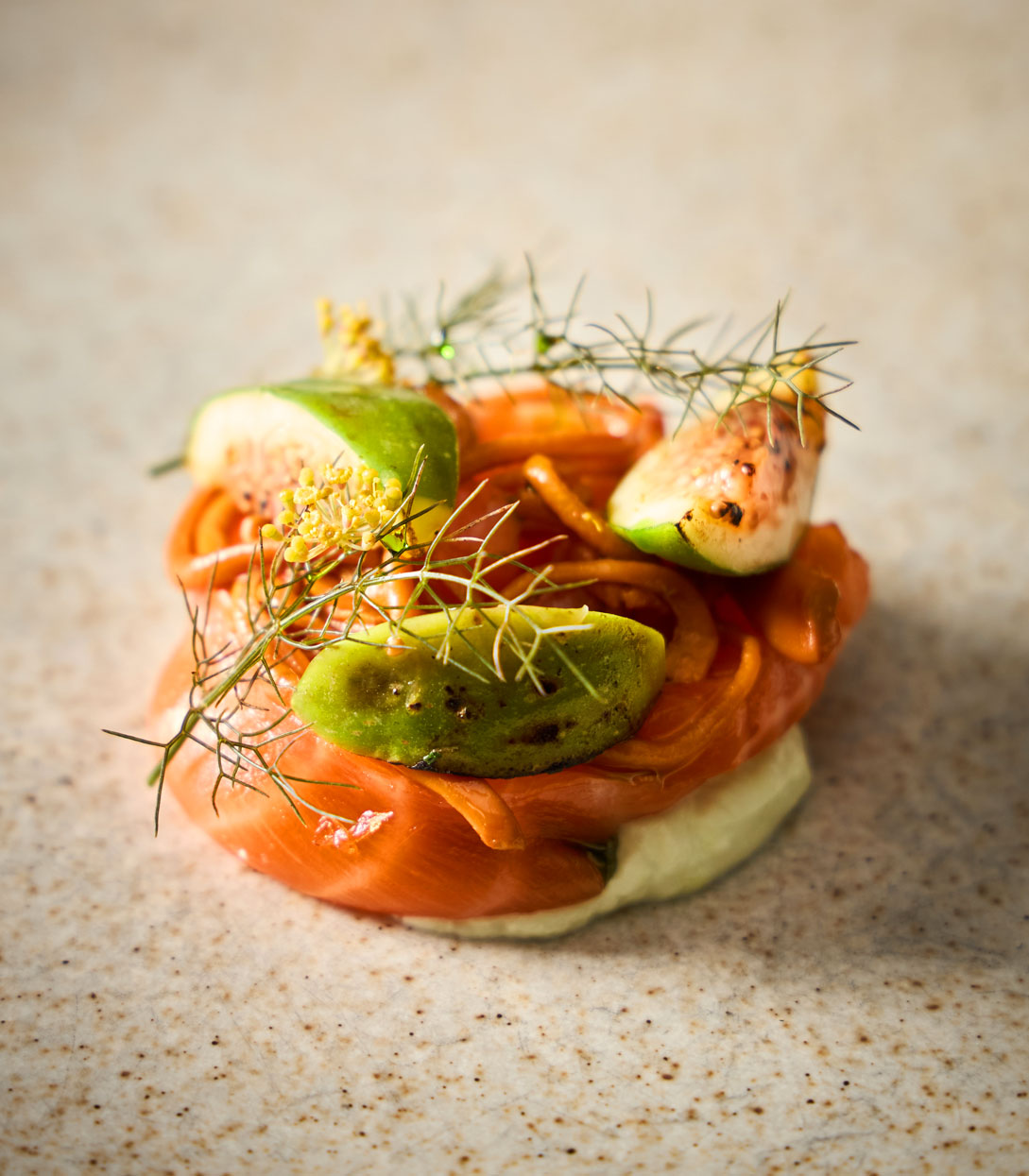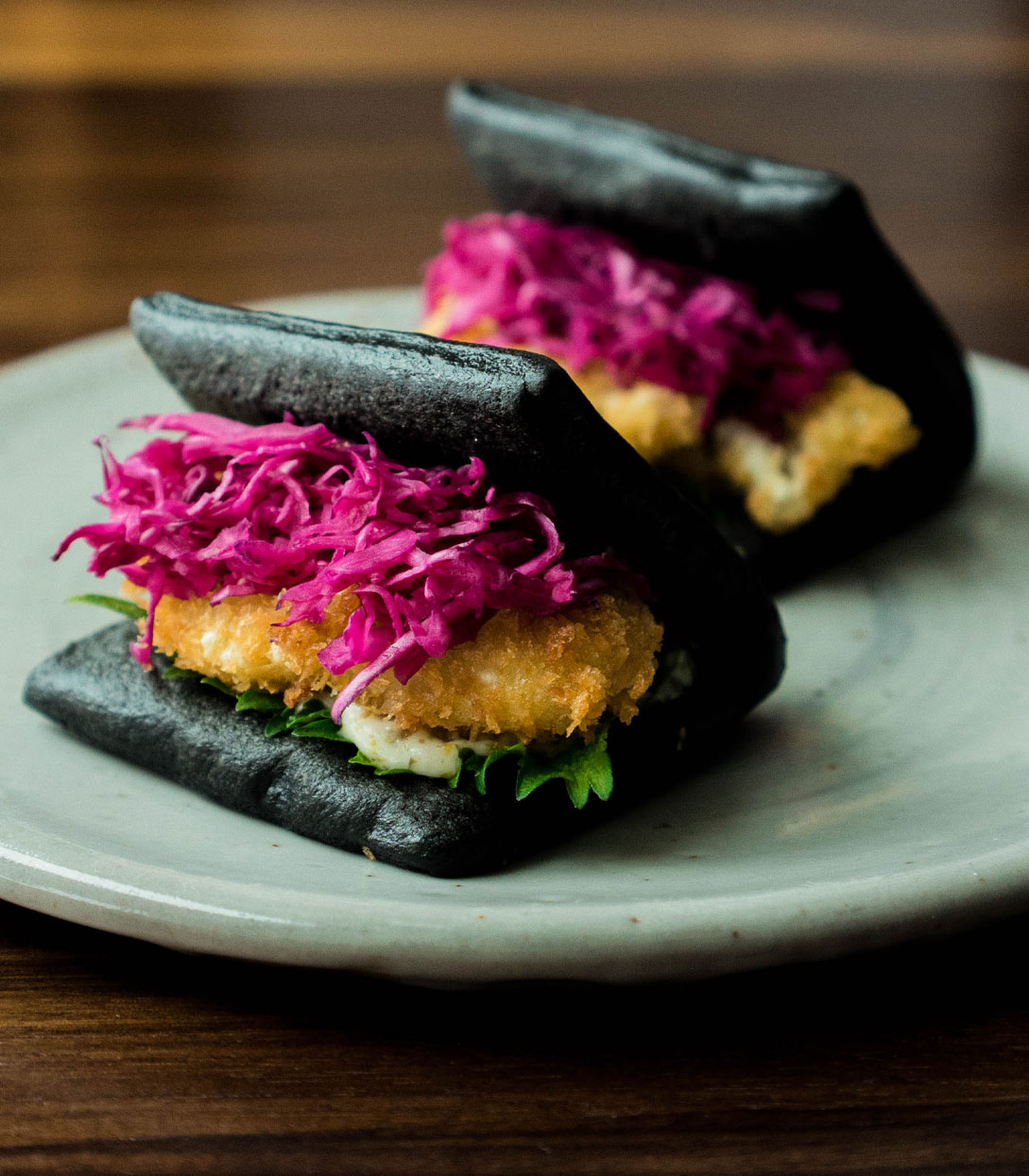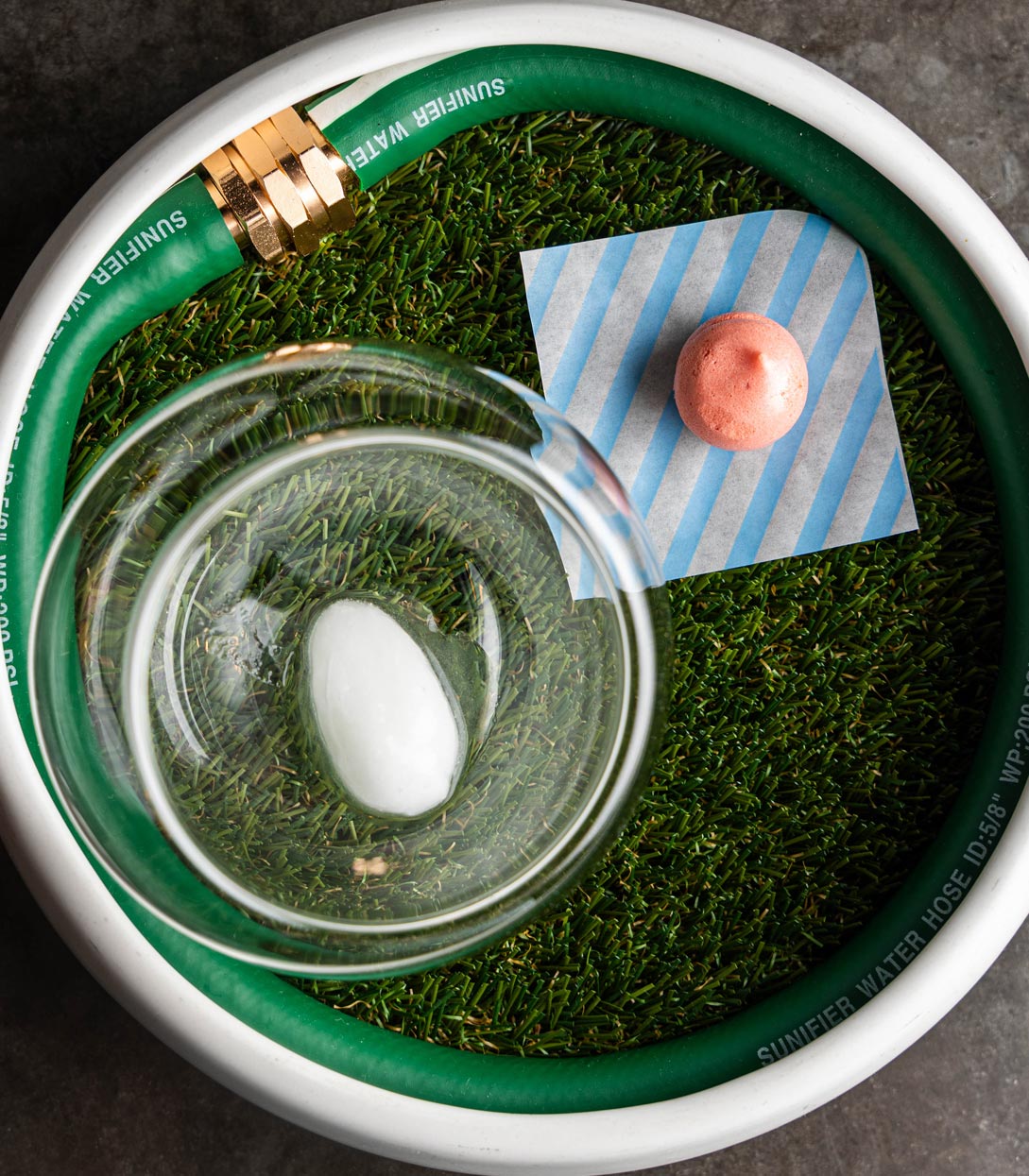As we look to the New Year and all the changes we plan to make to our daily routine to achieve annual goals, MICHELIN Guide chefs are doing the same.
In 2024, chefs are prioritizing healthful ingredients, from the land to the sea, packed with nutrients, protein, and antioxidants. From seaweed and sea salt to venison and tempeh, here are 13 ingredients you’ll see more of on menus from these MICHELIN Guide chefs.
Caviar
– Le Jardinier’s Culinary Director and Chef Alain Verzeroli
“We realized that this luxurious item is in high demand from our clientele and as a chef, you can use it in multiple preparations and recipes. You can really show your creativity and technique with this delicious ingredient. Plus, it's festive, celebratory, and matches very well with a wide variety of drinks, from sake and vodka to Champagne and white wine. It's a very versatile ingredient: You can have it to start a meal, simply prepared and served with a glass of Champagne or with a more elaborated composition, cold or warm.”
Bonus health benefits: “Besides being a delicacy, it’s highly nutritious, even served in a small quantity, providing great amounts of omega-3 fatty acids, vitamin B12, and selenium, among other vitamins and minerals.”

Seaweed
– Raiva, Chef Dárcio Henriques
“It is one of the most versatile powerful ingredients, full of benefits for the health and for the planet. Seaweed is full of nutritional value, full of flavor and health benefits (rich in various nutrients with potential antioxidant properties, rich in fiber and iodine content to name a few) and is also planet friendly. For me, it is one of the most special ingredients that will come full of power and techniques in the future for all the chefs.”

Santa Barbara Spot Prawns
– Providence, co-owner and chef Michael Cimarusti
“Spot prawns are one of the best ingredients in the world and they are harvested right on our doorstep. The spot prawn for me is as good as any prawn, lobster or langoustine harvested anywhere in the world. They can be prepared raw to be eaten as sashimi or chopped raw as a tartare. They are amazing poached and served chilled or hot, their texture is half the appeal, fresh prawns, properly prepared, have an amazing snap and chew. Grilled in the shell and peeled just before eating, they are as sweet as any prawn I’ve ever had. Cooked in salt, as we do here at Providence, they reveal their true character; nothing is added, save a few drops of olive oil and lemon--nothing more is needed the prawns do all the heavy lifting. Blanched quickly, peeled and sautéed in whole butter, spot prawns are sweeter and more delicious than any lobster you’ve ever had.”

RELATED: Fishing For The Future
Santa Barbara Cultured Abalone
– Caruso’s at Rosewood Miramar Beach, Chef Massimo Falsini
“The red abalone is a true California native, enjoyed as a treasure seafood on our coast for as long as people have lived here. Abalone will have the same relevance in our menus as the urchin as we are increasing our support of local aquaculture farms. Back in the day, abalone was as good as gold. Literally–the Chumash in this area used this funny sea creature’s shell for money and decorative jewelry, as well as one of their primary sources of protein.”

Millet
– Indienne, Chef and partner Sujan Sarkar
“Millet is a relatively new ingredient in America that has huge nutritional benefits and is also very versatile. I plan to use both tender and young (green) millet called “ponkh” (which is rare to find on any restaurant menu in the United States), as well as regular millet. It is a great substitute for gluten, it’s very versatile, and has nutritional benefits. It is a big part of ancient Indian cuisine and is just recently gaining popularity again.
Bonus health benefits: “Millet is a good source of protein, fiber, calcium, vitamins, and minerals. It is rich in niacin, which aids in healthy skin and organ function. It also has beta-carotene, which converts to vitamin A and supports your immune system. It can be good for cardiovascular health, managing inflammation, and controlling blood sugar levels. It’s a great substitute for animal proteins, and it will be a great addition to our vegetarian and vegan tasting menus this year.

Nepitella
– Rezdôra, Chef Stefano Secchi
"This is an herb from Italy that is a cross between mint and fresh marjoram; it's floral with that fresh herbaceous note. While it is used occasionally in Italy, we rarely see it in the U.S. and it can cross over between savory and sweet applications. The flowers are also edible, purple, delicious, and beautiful.”
Bonus health benefit: “Nepitella has long been used as a medicinal herb to aid digestion and insomnia, break fevers, and relieve period pain.”

Tempus No. 8
– Dining Room at The Goring, Executive Chef Graham Squire
“Tempus No. 8 is a responsibly sourced British 'nduja/sobrasada-style, fermented charcuterie product made in Weybridge. It has multiple uses; it can be cooked, used as a finish, or simply eaten with one of our freshly baked clay flatbreads. This product is so appealing because it is so well made (Tempus is committed to utilizing the food chain correctly), has so much layered flavor, and it's British!”

Adriatic Sea Salt
– Frasca Food and Wine, Chef Ian Palazzola
“I have been using more sea salt in my personal cooking and want to influence that further on our menu at Frasca. Sea salt from the Adriatic will continue to add to our terroir of Friuli- Venezia Giulia and the Istrian Peninsula. We are currently using Solana Nin Sea Salt, a world-renowned sea salt from Croatia, coined the "caviar among salts." This is a hand-harvested sea salt and famously not produced by machine or human.”
Bonus health benefit: “Adriatic sea salts are full of natural minerals that help keep you hydrated, reduce fluid retention, balance electrolytes, prevent muscle cramps, improve digestion, and regulate blood pressure among other benefits. It's also great for skin health.”

FIND OUT MORE: Sergei Kiefel of Frasca Food and Wine is the MICHELIN Guide Colorado 2023 Service Award Winner
Mushrooms
– Little Frenchie, Chef Matt Sramek
“So many varieties are available in the market from cultivated to wild, truly one of nature's versatile gems. They are delicious, bringing a rich, meaty taste and texture to my dishes while being a great fit for various dietary preferences.”
Bonus health benefit: “Packed with nutrients like Vitamin B, potassium, and selenium, they're a powerhouse of health benefits, supporting metabolism and bolstering the immune system. The unique potential of Lion's Mane mushrooms has been shown to offer relief for mild depression and anxiety.”

Yuzu
– The Japanese Restaurant, Twin Chefs Fabio Toffolon & Dominik Sato
“Fresh yuzu from Japan has become our favorite citrus fruit to cook with. Yuzu has an amazing aroma and you can use the whole fruit from the juice to the skin.”
Bonus health benefits: “It also has a multitude of health benefits as it contains high levels of Vitamin C and antioxidants that protect our cells and immune systems. Yuzu’s refreshing scent also has a calming and stress-reducing effect.”

Venison
– minibar, Chef Sarah Ravitz
“Venison is a rich and delicious protein that is not as commonly used as ingredients such as wagyu or other more common red meats. Its flavor is greatly impacted by what it is fed. We are working with a farm in Hawaii that harvests free roaming axis deer. Because they feed off the volcanic soil, the meat is higher in nutrients, with a clean flavor that is not gamey. Venison is high in essential fatty and amino acids. It is a good source of lean protein and is packed with an immense amount of B vitamins.”
Lemons
– Terrazza Bosquet, Executive Chef Antonino Montefusco
“Lemons are the symbol of Sorrento, my native town. Lemons from Sorrento are unique: the scent, the flavor but also the therapeutic properties. They can be considered a healthy food: rich in Vitamin C, mineral salts such as phosphorus, calcium, magnesium, and zinc. They are also rich in antioxidants and are detoxifying too: a panacea.”

Tempeh
– Grand Resort Bag Ragaz, Executive Chef Nadine Wächter
“The use of tempeh, a fermented soy product, is grounded in my personal connection, stemming from the time I spent living in Indonesia. Having been exposed to tempeh as a staple in Indonesian cuisine, its familiarity adds a cultural touch to the resort’s culinary offerings. Additionally, seeing as tempeh can be easily made by hand aligns with Grand Resort Bad Ragaz’s commitment to sustainable and wellness-forward ingredients. Its familiar taste and texture make it the perfect candidate to replace more complex meat alternatives. The nutty flavor and firm, yet chewy texture makes it an excellent ingredient suitable for a wide range of recipes.”
Bonus health benefit: “It is a rich source of plant-based protein, containing essential amino acids necessary for muscle development and repair. This makes it an ideal option for individuals seeking protein without relying on animal products.”




















